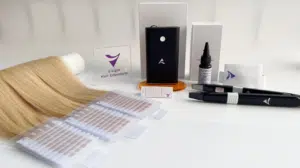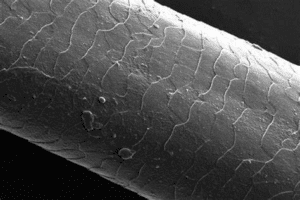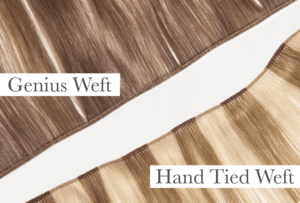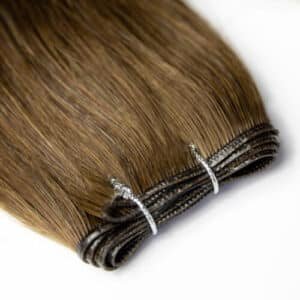Clients want long-lasting natural hair but temporary fixes fail. That costs trust. I explain professional permanent systems and how to choose them.
Permanent hair extensions are salon-applied systems—tape-ins, keratin bonds, micro-rings, and wefts—designed to last weeks to months. This article covers types, installation mechanics, lifespan, risks, aftercare, and wholesale quality factors for salon buyers.
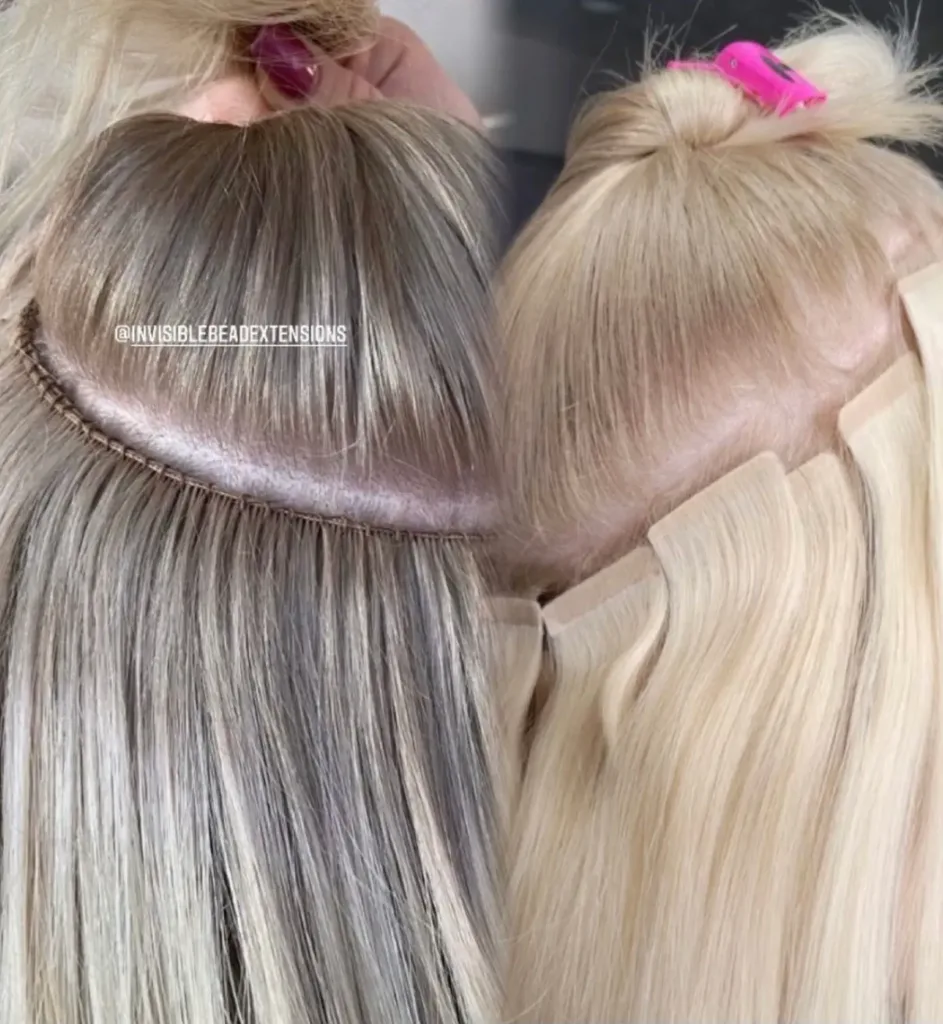
Read on for technical guidance, decision checklists, and supplier advice for salons and wholesalers.
What are permanent extensions?
Many people confuse “permanent” with “forever.” That confusion leads to wrong expectations. I set clear definitions and practical boundaries.
Permanent extensions are professional attachments that remain in the hair for weeks or months. Trained technicians fit them. The client does not remove them daily. The systems use adhesive, heat-bonded keratin, mechanical rings, or sewn wefts.
Dive deeper: clear definition, scope, and clinical distinction
Definition and scope
I define permanent extensions as salon-installed hair augmentations that require professional application and scheduled maintenance. The hair remains attached to the natural hair until a salon removes or repositions it. The alignment with the hair shaft, bond integrity, and reapplication schedule define the real service life.
Clinical distinction vs temporary systems
Temporary systems like clip-ins or halos are consumer products. The client applies them at home. Permanent systems require tools and technique. Permanent systems affect the hair shaft and the scalp environment. That requires professional assessment before application.
Why salons offer them
I explain three business reasons. First, permanent services create recurring revenue due to maintenance appointments. Second, premium materials justify higher pricing. Third, repeat clients build trust and referrals.
| Feature | Permanent Extensions | Temporary Extensions |
|---|---|---|
| Application | Salon professional | Self-applied |
| Wear time | Weeks to months | Daily removal |
| Tools | Heat, micro-rings, sewing | None or simple clips |
| Revenue model | Service + maintenance | Single sale |
Practical note. I always evaluate scalp health, hair integrity, and client habits before recommending a permanent method. A correct fit reduces risk and increases satisfaction.
What are the pros and cons of permanent extensions?
Clients want benefits and fear damage. That worry matters. I list clear pros and cons and mitigation steps.
Permanent systems deliver seamless, everyday results. They require maintenance and an upfront investment. The right method minimizes risk.
Dive deeper: benefits, risks, and professional mitigation
Clinical benefits
Permanent extensions provide consistent volume and length. They allow complex color effects without damaging the client’s own hair. They integrate with professional styling. They support advanced looks like balayage on extensions only.
Common risks and causes
Damage arises from incorrect weight distribution, poor attachment, or weak hair. Over-tension at bonds causes traction alopecia. Low-grade hair sheds faster and tangles. Incorrect adhesive or excess heat weakens the natural shaft.
How to mitigate risks
I recommend an initial consultation with a hair integrity test. The test includes a strand thickness check and a gentle pull test. I select a method that matches shaft diameter and density. I recommend full cuticle, single-donor hair to reduce tangling. I train staff on spacing, bonding angle, and load per follicle.
| Pro | Why it matters | Mitigation |
|---|---|---|
| Natural movement | Blends with client hair | Use full cuticle hair |
| Long wear | Client convenience | Set maintenance schedule |
| High-value service | Salon revenue | Train technicians |
| Versatility | Color and style options | Match method to hair type |
| Higher cost | Upsell opportunity | Offer financing or packages |
What are the types of permanent hair extensions?
Many sources list a few names. That creates incomplete advice. I provide full categories and subtypes with technical notes.
Permanent methods fall into four families. They are tape-in systems, keratin bond systems (heat applied), micro-ring systems (no heat), and weft systems (sewn or taped). Each family has subtypes for specific client needs.
Tape-in family (adhesive based)
- Classical Tape-In: Two adhesive strips sandwich the client’s hair. The bond is flat. The install is fast. This is ideal for medium-thickness hair.
- Invisible Tape-In (PU base): Hair is injected into a transparent polyurethane base. The base mimics the scalp and reduces edge visibility. Use for very short or fine hairlines.
- Stitched Tape-In: Tape base with 1–2 stitched rows increases tensile strength and reduces shedding. Use when client needs durability and repeated wears.
- Micro Tape-In: Small, flower-shaped tape sections disperse hair for a fuller blend. Use for fine or thinning zones.
- Mini Tape-In: Tiny tabs for precision placement around the hairline or partings. Best for fine hair.
- Invisible Tape Weft: Pre-taped weft using injection tech for a flat, fast application. Good for full-head installs with reduced chair time.
- Long Tape Weft: Long pre-taped wefts reduce install time for large-volume jobs.
Practical points: Tape adhesives vary by tack level. Use medical-grade adhesive for longevity and low-irritation. Reapplication occurs typically every 6–8 weeks.

Keratin bond family (heat applied)
- U-Tip (Nail) Bonds: Keratin pre-tips shaped like a U. Use a heat connector to melt bond around the natural hair. Very secure and natural when placed correctly.
- V-Tip Bonds: V-shaped keratin creates a slimmer bond profile. Good for fine hair and for blending near the hairline.
- Flat-Tip Bonds: Flat keratin bonds lay flatter than U or V tips. They can be trimmed and shaped to match the client’s layering.
Practical points: Use dedicated heat tools with temperature control. Avoid repeated heating on the same bond. Keratin bonds are strong but not typically reusable.
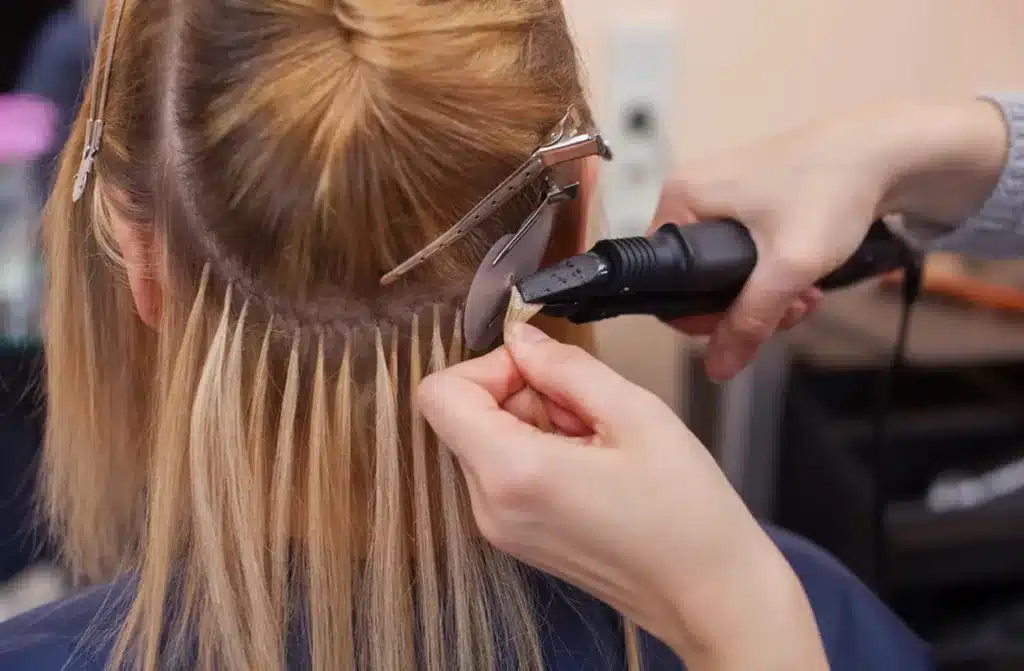
Micro-ring family (no heat)
- I-Tip (Stick Tip): Hair is tipped and inserted into a micro-ring. The ring is clamped. Movement is 360°. Reusable and gentle if rings are correctly sized.
- Nano Ring: Smaller rings that reduce bulk and visibility. They require precision tools. Use for clients prioritizing invisibility.
- Micro Ring / Micro Loop: Larger beads for sturdy attachment without glue or heat.

Practical points: Rings compress around a strand of natural hair. Use silicone-lined rings for reduced slipping. Re-lifts involve sliding rings and re-clamping.
Weft family (sewn or taped)
- Regular Machine Weft: Sturdy two-layer weft. Cuttable and durable. Good for standard full-head installs.
- Volume Weft: Triple-layer weft to increase fullness with fewer wefts. Good for heavy density needs.
- Hand-Tied Weft: Thin, handmade weft that lies flat. Luxury choice. Cannot be cut without risk of shedding.
- Genius Weft: Hybrid of hand and machine methods. Thin top, cuttable, low shedding. Suited to high-end salons.
- Flat Weft: Thin and sealed to prevent shedding. Comfortable and discreet.
- Volume Genius Weft: Double/triple-layered Genius design for thickness with invisibility.
- Butterfly Weft: Weft with pre-spaced holes to speed beaded and reduce bulk.

| Family | Typical install time | Typical lifespan | Reusability | Best for |
|---|---|---|---|---|
| Tape-In | 1–2 hours | 6–8 weeks | Yes (3–4 cycles) | Fast installs, color work |
| Keratin Bond | 2–4 hours | 3–5 months | No | Long-term wear, high activity |
| Micro-Ring | 2–3 hours | 8–12 weeks | Yes | Damage-free, fine hair |
| Weft | 1.5–3 hours | 6–10 weeks | Yes | High-volume, sew-in styles |
This taxonomy helps when matching a client’s hair, activity level, and budget to the right system. I recommend in-salon trials for new technicians.
How long do permanent hair extensions last?
Clients ask about weeks and months. They expect precise guidance. I give realistic timelines and factors that influence longevity.
Lifespan depends on the method, hair grade, client care, and maintenance cadence. The same extension will last longer when installed correctly and cared for.
Typical lifespans by method
- Tape-in: 6–8 weeks before re-lift. The tapes can be reused 3–4 times when cleaned properly.
- Keratin bonds (U/V/Flat): 3–5 months with proper placement. Keratin tips are single-use.
- Micro-rings / Nano: 8–12 weeks between adjustments. The hair strands are reusable for many cycles.
- Wefts (sewn/taped): 6–10 weeks per install. Weft bundles can be restitched or reused depending on weft type and handling.
Factors that shorten lifespan
- Heat exposure from styling tools at the bond area.
- Use of oily or silicone-heavy products that break down adhesives.
- Rough brush technique and poor detangling.
- High-tension hairstyles like tight ponytails.
- Excessive chemical services performed by inexperienced stylists on the bonded area.
Maintenance schedule
- Tape-in: Re-lift every 6–8 weeks. Clean tape residue with approved solvent. Replace tapes when tack weakens.
- Keratin bond: Remove and reapply after 3–5 months. Use a heat protector on the natural hair.
- Micro-ring: Slide and clamp rings or replace every 8–12 weeks. Replace silicone liners as needed.
- Weft: Re-sew or re-tape after 6–10 weeks. Monitor weft edge for shedding.
| Method | Re-lift interval | Key maintenance |
|---|---|---|
| Tape-In | 6–8 weeks | Clean adhesive, replace tapes |
| Keratin Bond | 12–20 weeks | Professional removal only |
| Micro-Ring | 8–12 weeks | Slide rings, check liners |
| Weft | 6–10 weeks | Restitch, check seals |
I train clients on gentle wetting, brush direction, and product selection. Proper education extends lifespan and protects your salon’s reputation.
How do permanent extensions work?
Technicians need to know the mechanics. That knowledge prevents mistakes. I explain the physical and chemical actions behind each method.
Each system attaches hair by a different mechanism. Adhesion, fusion, mechanical clamping, or sewing are the core techniques. The technique determines tools, risks, and aftercare.
Tape-in mechanics
Tape-in extensions use pressure-sensitive adhesive. The adhesive bonds two thin wefts around a thin slice of natural hair. The bond relies on clean hair and proper pressure. Solvent breaks down adhesive at removal. Tools: application tabs, leveling comb, and a solvent for removal.
Step summary:
- Section hair. 2. Clean hair at the root. 3. Place lower tape under natural hair. 4. Sandwich with upper tape. 5. Press firmly and check alignment.
Keratin bond mechanics
Keratin tips melt when heated with a connector. The molten keratin flows around small sections of natural hair. The keratin cools and solidifies into a rigid bond. Tools: temperature-controlled heat connector, pliers, and a finishing trimmer.
Step summary:
- Section hair. 2. Load extension under heat. 3. Apply heat to melt keratin. 4. Roll and press the bond to shape. 5. Trim bond if needed.
Micro-ring mechanics
Micro rings clamp around a small section of natural hair and the extension’s tip or loop. Silicone liners increase grip and reduce metal-to-hair contact. Tools: insertion needle, pliers, and high-precision rings.
Step summary:
- Thread natural hair into ring. 2. Insert extension tip. 3. Position ring close to the root but not on the scalp. 4. Clamp ring with pliers.
Weft mechanics
Wefts are sewn onto a track or integrated with a tape base. The track can be a beaded foundation or a cornrow. Tools: curved sewing needle, thread, or tape guns for pre-taped wefts.
Step summary:
- Prepare the base (braid or bead row). 2. Align weft. 3. Sew with secure stitches or apply tape. 4. Check tension across the scalp.
| Method | Core mechanics | Primary tools |
|---|---|---|
| Tape-In | Pressure adhesive | Tape tabs, leveling comb |
| Keratin Bond | Heat fusion | Heat connector, pliers |
| Micro-Ring | Mechanical clamp | Rings, pliers, needle |
| Weft | Sewing / tape | Needle, thread, tape |
What are the best permanent hair extensions?
Buyers ask for “the best.” That request is incomplete. I explain evaluation criteria and offer recommendations by client goal.
The best extension is the one that matches the client’s hair, the stylist’s skill, and the salon’s service model. Material quality and factory control top the list.
Key selection criteria
- Hair quality: Full cuticle, single-donor hair resists tangling and lasts longer.
- Weft construction: Sealed edges and even density reduce shedding.
- Adhesive & keratin quality: Medical-grade adhesives and keratin formulas reduce irritation and improve lifespan.
- Color matching: Natural color blends and a wide color palette lower the need for salon color correction.
- Batch consistency: Same-donor lots provide uniform texture across large orders.
| Goal | Recommended system | Why |
|---|---|---|
| Luxury | Hand-tied / Genius Weft | Thin top, natural lay |
| Fast installs | Invisible Tape Weft | Reduced chair time |
| Fine hair | Nano Ring / V-Tip | Low profile bonds |
| Budget-friendly | Regular Machine Weft | Cost effective, durable |
How to choose the right permanent extension for your client?
Stylists need a repeatable decision path. I provide a clinical checklist and a mapping table.
A good consultation reduces rework. The checklist identifies hair health, client priorities, and technical constraints.
Consultation checklist
- Ask about daily routine and styling tools.
- Inspect scalp and hair for disease, breakage, or thinning.
- Measure hair diameter with caliper or visual gauge.
- Perform a gentle pull test to assess anchoring strength.
- Discuss maintenance willingness and budget.
- Determine desired outcome: length, volume, or both.
Decision matrix (example)
| Client profile | Recommended system | Rationale |
|---|---|---|
| Thick hair, needs volume | Hand-tied weft / Volume Weft | Wefts distribute weight and add thickness |
| Fine hair, wants invisibility | Nano Ring / Invisible Tape-In | Low-profile bonds reduce visibility |
| Active client, swims often | Keratin U-Tip with waterproof care | Strong bond, careful aftercare |
| Budget-conscious | Machine Weft | Lower product cost, effective install |
This step-by-step system standardizes consultations across your staff and improves client outcomes.

Supply and quality considerations for salons and wholesalers?
Buying decisions affect service quality. I list practical procurement checks and supply criteria for B2B buyers.
A reliable supplier ensures consistent color, texture, and delivery. A poor supplier increases rework and refunds.
Factory and material questions to ask
- Do you source single-donor hair?
- Are the cuticles intact and aligned?
- Can you provide certificate of origin and ethical sourcing proof?
- What is the MOQ and lead time?
- Do you offer color-matching samples and lab dips?
Logistics and business terms
- MOQ: Ask if they offer trial MOQ for new SKUs.
- Packaging: Ensure hygienic, tamper-evident packaging that displays weight and color codes.
- Custom orders: Ask lead time for custom colors and blends.
- Returns: Confirm clear policies for defective goods.
- Training & support: Check for training materials and how-to guides.
| Procurement item | What to verify |
|---|---|
| Hair grade | Full cuticle, single donor |
| Weft construction | Sealed, consistent density |
| Adhesive/keratin | Material spec, safety data |
| Samples | Physical samples with batch numbers |
| Logistics | Lead time, MOQ, packaging |

My opinion?
As a hair extensions manufacturer,I have worked with many salons and brands. I prefer to suggest wholesalers to choose full cuticle, single-donor hair for professional work.
I emphasize that material quality is the single biggest driver of long-term client satisfaction.I advise that salons invest in technician training before launching a new system. Training reduces damage, reduces rework, and increases client trust. I recommend a staged product rollout. Start with sample SKUs and run a pilot with 5–10 clients. Track re-lift times, client feedback, and product behavior.
Finally, I view extensions as a long-term service line. When salons choose premium materials and pair them with proper technique, they create repeatable revenue. My practical advice: prioritize consistency over short-term margins.
FAQ?
Q: Do extensions cause hair loss?
A: Not when applied correctly. Damage occurs from poor technique and excessive weight. Technician skill and correct spacing prevent tension.
Q: How do I test hair quality before ordering?
A: Request samples and run a slip test, a tensile test, and a color fastness wash. Check for scale alignment under magnification.
Q: Can extensions be colored by the salon?
A: Yes, but only by trained colorists. Coloring pre-bonded areas or low-quality hair can cause damage.
Q: What are realistic service prices?
A: Prices depend on material and labor. Hand-tied installs with premium hair command higher fees. Tape-in services with reusable tabs may offer better margins for quick appointments.
Q: How to train staff?
A: Use manufacturer training, in-salon shadowing, and competency checks. Require documented sign-off before independent services.
This FAQ helps sales teams and stylists answer client queries consistently.
Conclusion
Permanent extensions transform service offerings. Choose quality, train staff, and follow strict consultation and maintenance protocols to protect clients and grow your salon revenue.
Hibiscus Hair Manufacturer has been dedicated to producing high-quality hair extensions for 25 years and is a recognized leader in the industry. If you are interested in finding a reliable hair extensions supplier and wholesale for your brand, please visit our website for more information:
HOME

